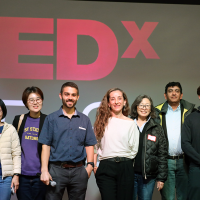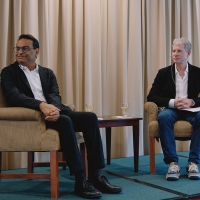SFSU researchers’ unique 3D maps might help solve the mysteries of octopus arms
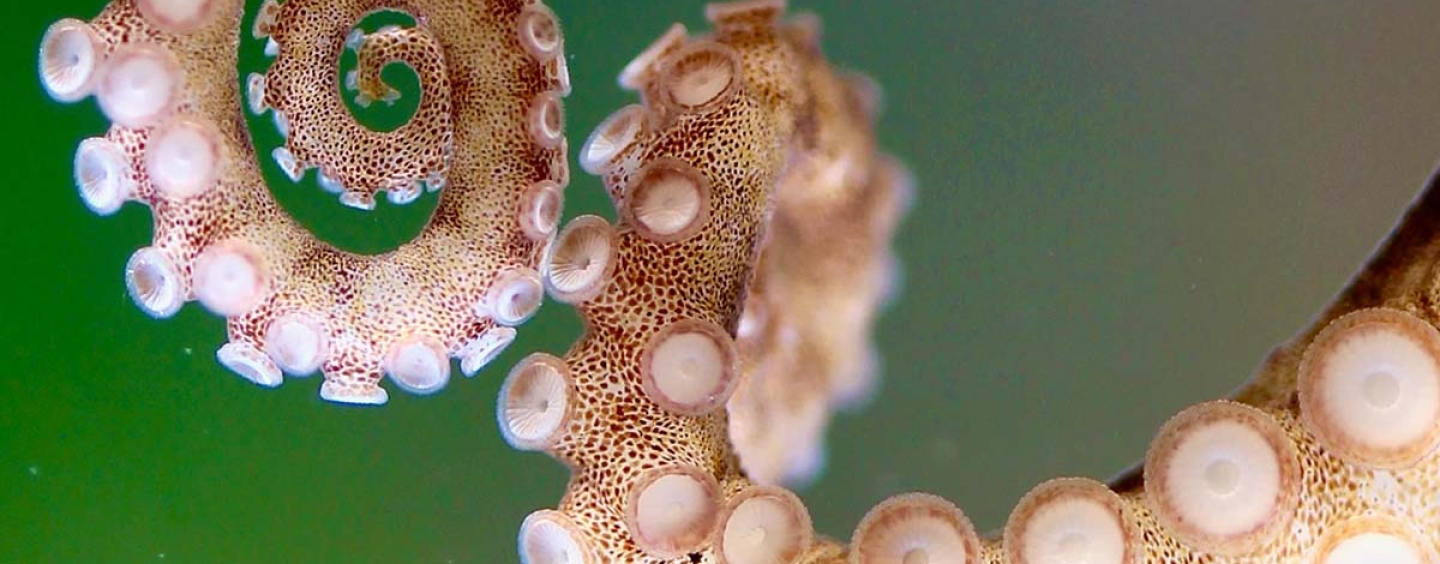
Two new papers could help improve understanding of octopus arm function, development, evolution and more
Octopuses are fascinating. Their eight arms gracefully whip through water and can accomplish extraordinary tasks like using tools and opening jars. While humans have one spinal cord attached to their brain, in octopuses, it’s almost like each arm has its own spinal cord (minus the actual spine) and nervous system. These arms can even initiate a response without consulting the brain.
How octopus arms can do all this at a cellular level has largely remained a neuroscience mystery — one that’s proved difficult to study because of technological limitations and the expense of research. But now San Francisco State University researchers are starting to provide answers.
Trying to overcome those previous limitations, the San Francisco State researchers created three-dimensional molecular and anatomical maps of the inner neuronal circuitry of octopus arms. Their recent findings were published in two scientific papers in the journal Current Biology.
“Having [these two papers] converging at the same time means the amount we can learn from any single experiment is just astronomically higher,” SF State Biology Associate Department Chair and Assistant Professor Robyn Crook said of her lab’s research. “I would say these papers are really facilitating discovery in new ways.”
This research was supported by an Allen Distinguished Investigator Award, a Paul G. Allen Frontiers Group advised grant of the Paul G. Allen Family Foundation. Crook’s Allen Distinguished Investigator (ADI) grant was the first recipient in the California State University (CSU) system since the grant’s inception in 2010.
A traditional two-dimensional look at the octopus arm is comparable to taking a thin slice out of the middle of a fruit loaf. It’s difficult to know if distribution of fruits and nuts in that slice is representative of distribution and interactions throughout the loaf. Instead, postdoctoral fellow Gabrielle Winters-Bostwick and graduate student Diana Neacsu took multiple sections along the octopus arm to create 3D reconstructions of cell distribution and gross anatomy, respectively.
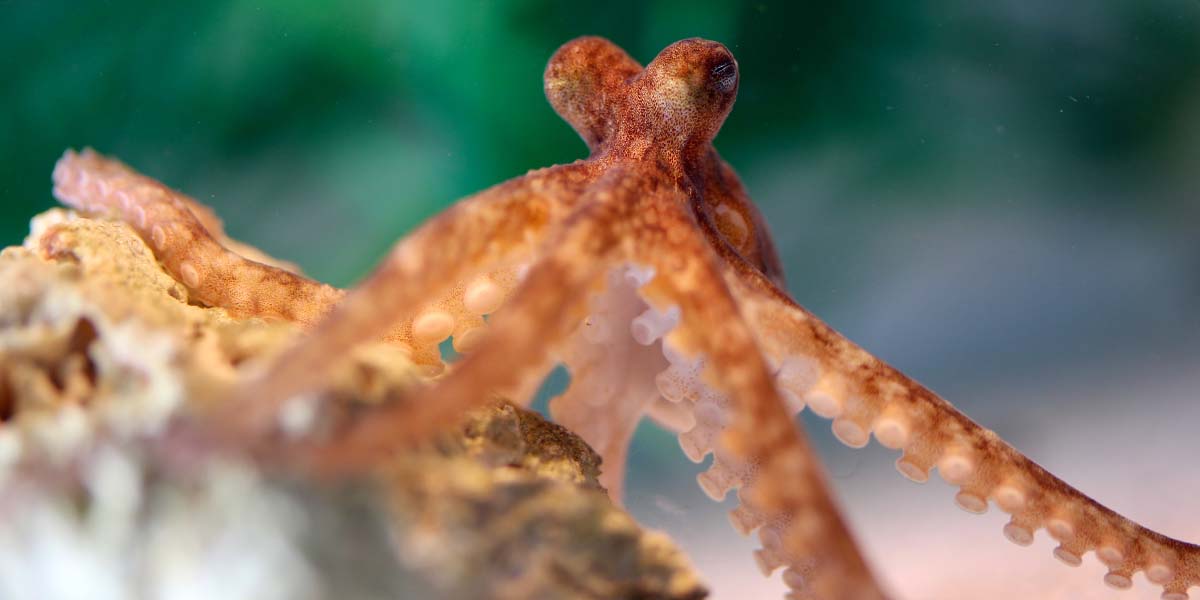
For her study, Winters-Bostwick used molecular tags to highlight different types of neurons. Seeing these neurons in a 3D reconstruction revealed that the cells at the tip of an octopus arm are different from those at the base closer to the central brain.
“This allows us to start hypothesizing and posing new questions thinking about how the cells communicate with one another,” she explained. “It’s basically building our arsenal and our toolkit to better understand the behavior and physiologies of octopuses.”
Using a different imaging approach (3D electron microscopy), Neacsu did a parallel project to create a 3D reconstruction mapping the structural organization of the components of the nervous system in the octopus arm. Her map revealed that there is symmetry in the organization of the ganglia and repeating patterns in nerve branching, blood vessels and more. Some of these patterns correspond to the octopus arm suckers, which are organized in a hexagonal lattice like rows of honeycomb. This repeating pattern is something they couldn’t see with just two suckers, Crook explained, highlighting the necessity of the 3D reconstruction of a large tissue.
“To see how closely the [nervous system structures] associated with the suckers was really surprising,” Neacsu said. “But it makes sense because the suckers play such a huge role in the octopus’s ecological niche, helping them hunt, sense and more.”
Crook is proud to say her team was able to do much of these projects in-house at SF State. Of particular importance was the recently acquired microscope (Leica STELLARIS) in the University’s on-campus Cellular and Molecular Imaging Center (CMIC), which has trained over 1,000 students. “There are a lot of [universities] that don’t have a microscope like this. For us to have one here to do this work is kind of mind blowing,” Crook said. “[Winters-Bostwick’s] paper would not exist without that microscope.”
One of the major limiting factors in research — particularly cutting-edge projects like Crook’s — is the high price tag of equipment and computational tools. “The ADI grant has been transformative to have funds to do things in my lab that I would not have been able to do and to engage students on a really big scale,” Crook notes. “It’s been transformative for me as a PI but also for the students in my lab.”
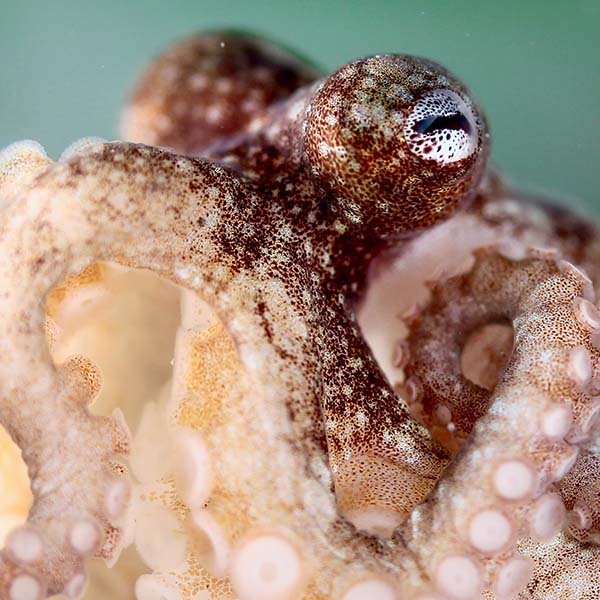
The ADI project and Crook’s mentorship were instrumental for Neacsu, now a Ph.D. student at Katholieke Universiteit (KU) Leuven in Belgium. During her two years in Crook’s lab, Neacsu gained advanced technical skills and networked and collaborated with more senior researchers, and now she has more scientific research papers in the pipeline.
“Before I met her, I never really understood the concept of mentorship,” Neacsu said of Crook. “I kind of just thought [mentors] were teachers that are available during office hours.”
Neacsu’s and Winters-Bostwick’s papers enabled a myriad of research opportunities both within Crook’s lab and beyond. Other labs have already showed interest in using these tools for cephalopod neuroscience research.
The SF State team is looking at live tissues and seeing how they respond to chemical and mechanical stimulation, trying to understand neurons firing in real time. With the new 3D maps, they can make realistic predictions about what’s happening inside an octopus arm to create these responses. There are also a lot of evolutionary questions Crook’s lab is eager to answer.
“Why do you have an animal with this much complexity that doesn’t seem to follow the same rules as our other example — humans — of a very complex nervous system?” Crook asked. “There’s a lot of hypotheses. It might be functional. There might be something fundamentally different in the tasks octopus arms have to do. But it could also be an evolutionary accident.”
Learn more about research in SF State’s Department of Biology.
Tags
